AMD AM1 Kabini Part 2: Athlon 5350/5150 and Sempron 3850/2650 Tested
by Ian Cutress on May 29, 2014 2:00 PM ESTReal World Benchmarks
Video Conversion - x264 HD 3.03 Benchmark
Graysky's x264 HD test uses x264 to encode a 4Mbps 720p MPEG-2 source. The focus here is on quality rather than speed, thus the benchmark uses a 2-pass encode and reports the average frame rate in each pass.
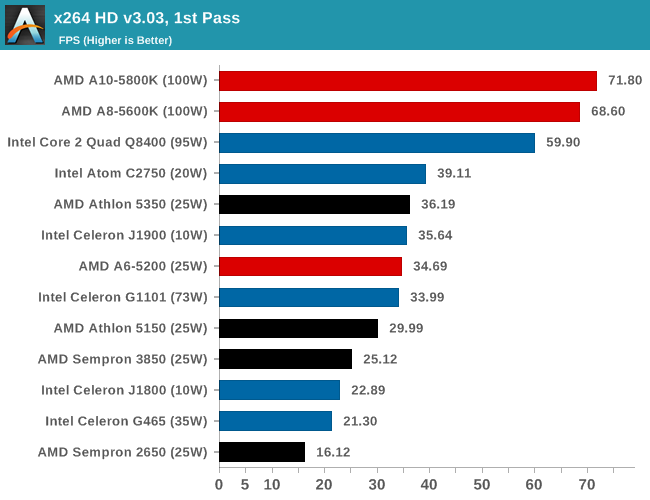
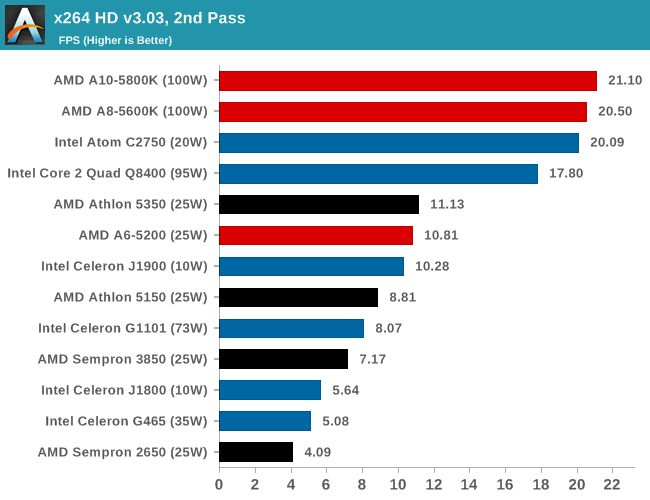
Encryption –TrueCrypt v0.7.1a: link
TrueCrypt is an off the shelf open source encryption tool for files and folders. For our test we run the benchmark mode using a 1GB buffer and take the mean result from AES encryption.
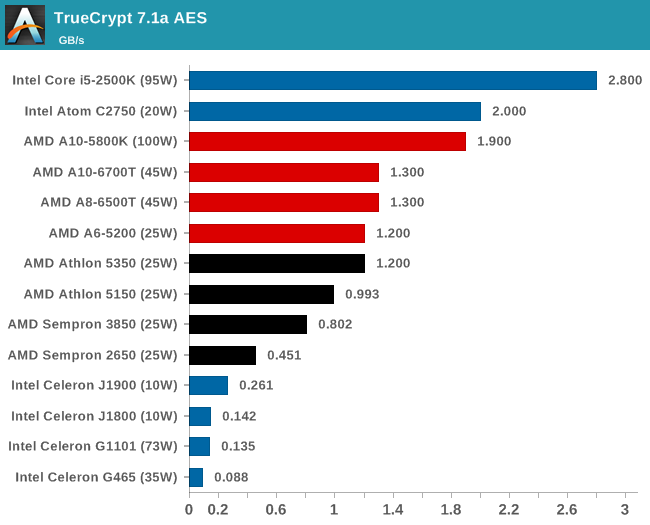
Compression – WinRAR 5.0.1: link
Our WinRAR test from 2013 is updated to the latest version of WinRAR at the start of 2014. We compress a set of 2867 files across 320 folders totaling 1.52 GB in size – 95% of these files are small typical website files, and the rest (90% of the size) are small 30 second 720p videos.
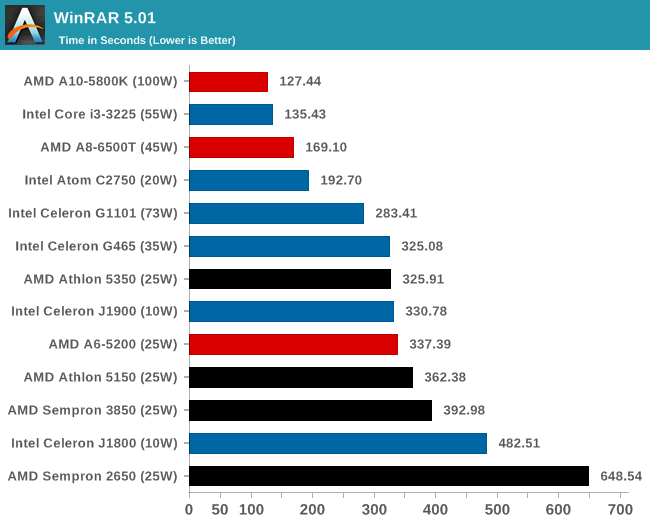
Image Manipulation – FastStone Image Viewer 4.9: link
Similarly to WinRAR, the FastStone test us updated for 2014 to the latest version. FastStone is the program I use to perform quick or bulk actions on images, such as resizing, adjusting for color and cropping. In our test we take a series of 170 images in various sizes and formats and convert them all into 640x480 .gif files, maintaining the aspect ratio. FastStone does not use multithreading for this test, and thus single threaded performance is often the winner.
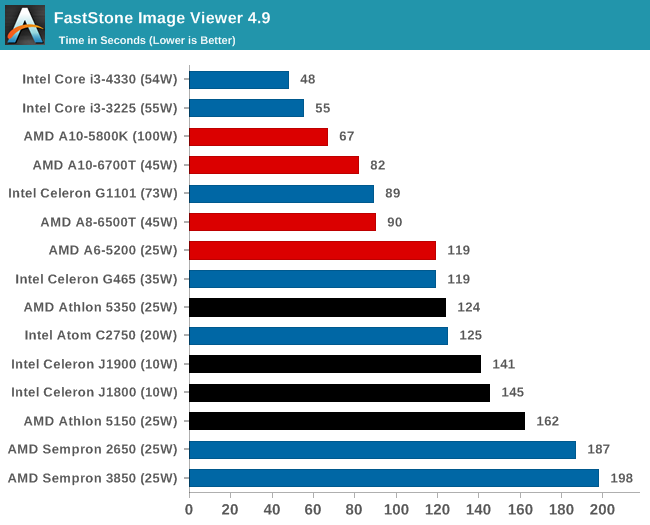










87 Comments
View All Comments
mikk - Thursday, May 29, 2014 - link
G1820 is missing or at least a cheap Haswell Pentium.hojnikb - Thursday, May 29, 2014 - link
Yes that would be really great, since those chips are price about the same.jospoortvliet - Sunday, June 1, 2014 - link
These do use far more power.On that note, why on earth doid the reviewer compare power usage over idle (never seen that particular metric at anandtech?!?) While not mentioning the idle power (according to various other sites, the amd's sport significant lower idle power). I don't like to think so but this is probably the only power metric to make the atoms look remotely good... Why was it chosen?
savagemike - Thursday, May 29, 2014 - link
I agree completely. If I were building a budget desktop right now that is exactly the chip (or similar) which I'd be comparing these to.MikeMurphy - Thursday, May 29, 2014 - link
I can buy a G3220 Haswell Pentium running at 3.0ghz for $60. I was really hoping this would make it into this review!!Stuka87 - Thursday, May 29, 2014 - link
The G3220 is a 53W chip. These are 25W chips. They do not compete with each other.HisDivineOrder - Friday, May 30, 2014 - link
Atom chips are 10W chips. These Semprons are 25W. They do not compete with each other.See how that doesn't impact the fact that people are talking about more than just wattage? ;) Some people just want to know what the best VALUE is per dollar and these low end options are all in the running.
Why limit yourself to just discussing wattage-appropriate? Especially when those Semprons are already over twice the Atom chips in terms of watts.
bsim500 - Friday, May 30, 2014 - link
"The G3220 is a 53W chip. These are 25W chips. They do not compete with each other."Intel's TDP is way overstated on its dual-cores. My "55w" i3 pulls about 32w in reality (measured at the wall, not calculated). I've seen Haswell Pentium's that are sub-30w, (full speed not the slow "T" variants). They are very definitely in the same bracket. In fact, at stock 3.4GHz, with a -0.15v undervolt, I can get my "77w" i5-3570 down from a measured 59w (1.1v) to around 47w (0.95v). At 3.0GHz at 0.83v, you're looking at 36w 4T / 25w 2T (for an i5). AMD's Kabini's are still on 28nm vs Intel's 22nm, and you'd be surprised just how low you can go with undervolting the latter's "big cores".
silverblue - Friday, May 30, 2014 - link
The point is moot as AMD is known for overvolting its processors; an article on Kabini would be very interesting.lyeoh - Sunday, June 1, 2014 - link
Which is why this article needs some actual power consumption benchmarks.